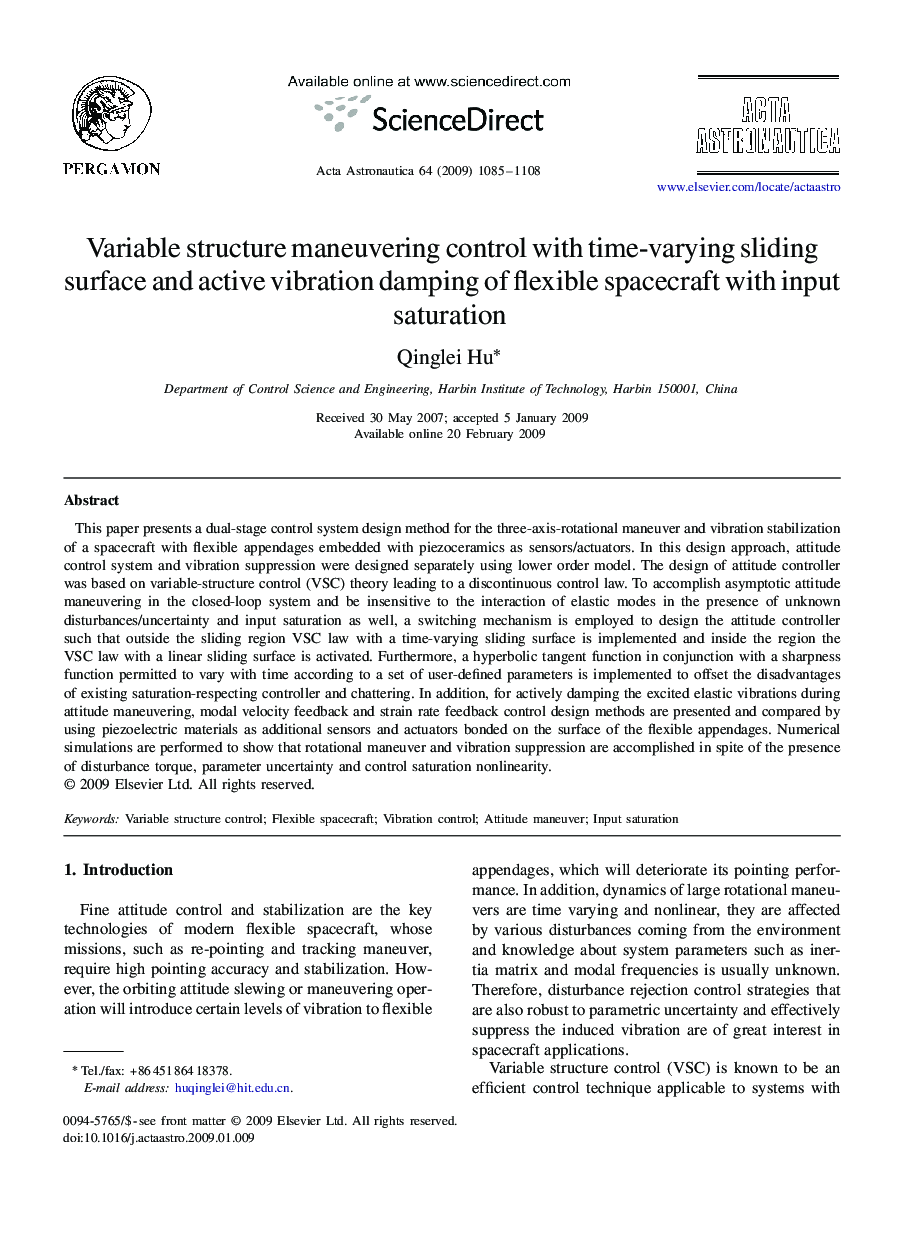| Article ID | Journal | Published Year | Pages | File Type |
|---|---|---|---|---|
| 1716514 | Acta Astronautica | 2009 | 24 Pages |
This paper presents a dual-stage control system design method for the three-axis-rotational maneuver and vibration stabilization of a spacecraft with flexible appendages embedded with piezoceramics as sensors/actuators. In this design approach, attitude control system and vibration suppression were designed separately using lower order model. The design of attitude controller was based on variable-structure control (VSC) theory leading to a discontinuous control law. To accomplish asymptotic attitude maneuvering in the closed-loop system and be insensitive to the interaction of elastic modes in the presence of unknown disturbances/uncertainty and input saturation as well, a switching mechanism is employed to design the attitude controller such that outside the sliding region VSC law with a time-varying sliding surface is implemented and inside the region the VSC law with a linear sliding surface is activated. Furthermore, a hyperbolic tangent function in conjunction with a sharpness function permitted to vary with time according to a set of user-defined parameters is implemented to offset the disadvantages of existing saturation-respecting controller and chattering. In addition, for actively damping the excited elastic vibrations during attitude maneuvering, modal velocity feedback and strain rate feedback control design methods are presented and compared by using piezoelectric materials as additional sensors and actuators bonded on the surface of the flexible appendages. Numerical simulations are performed to show that rotational maneuver and vibration suppression are accomplished in spite of the presence of disturbance torque, parameter uncertainty and control saturation nonlinearity.
